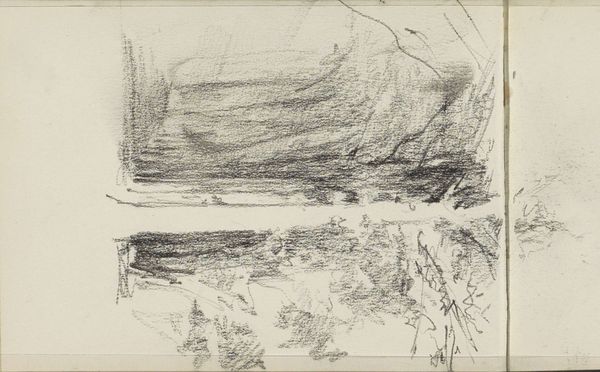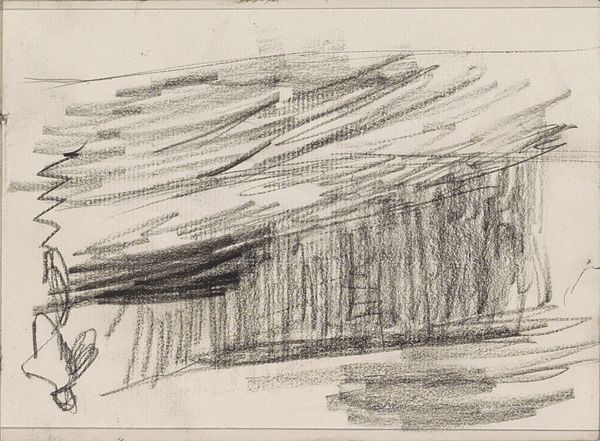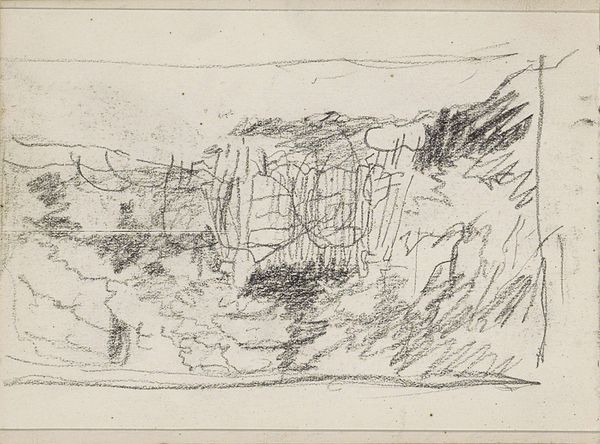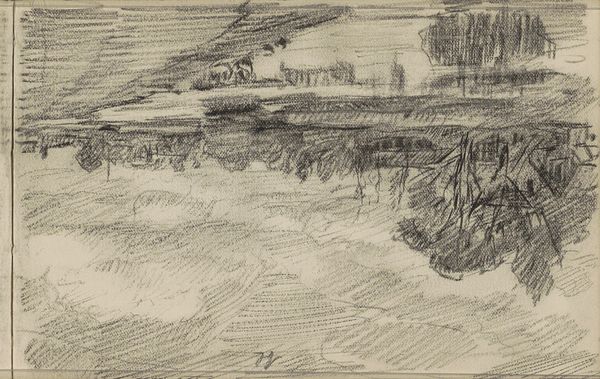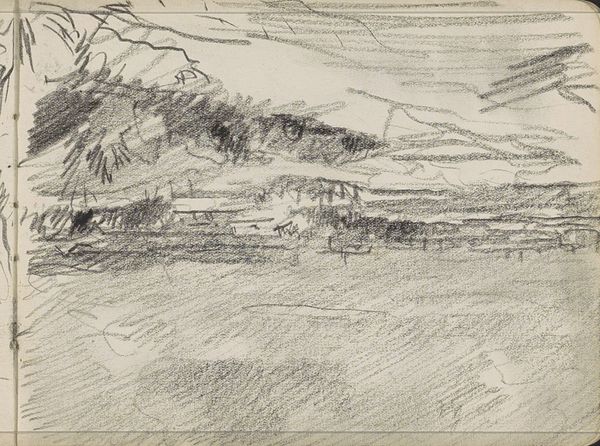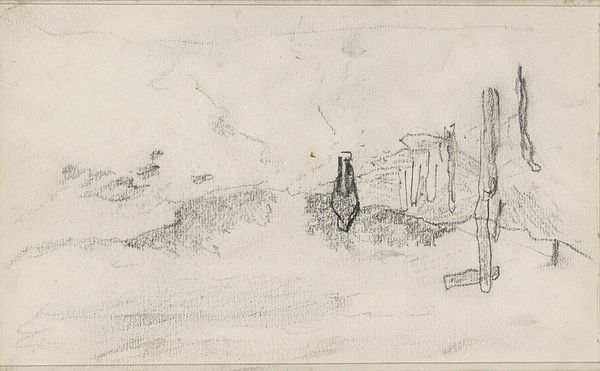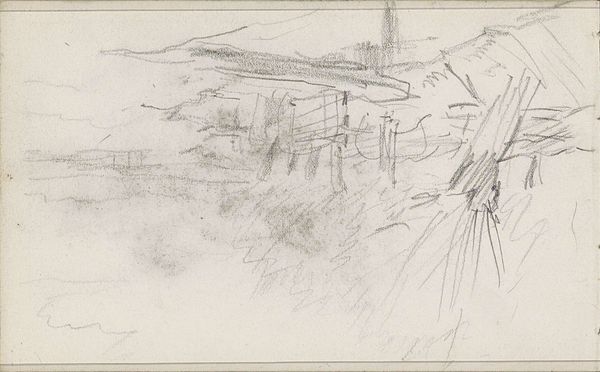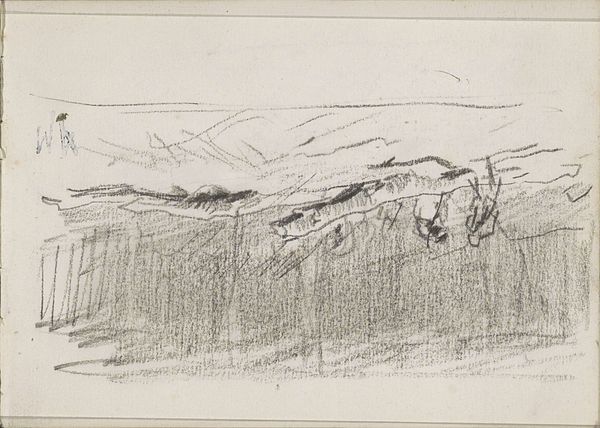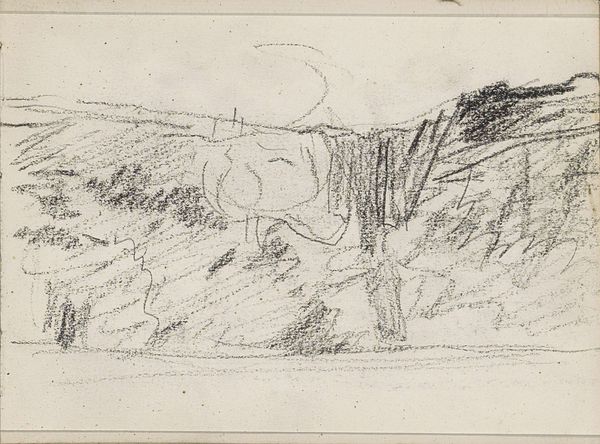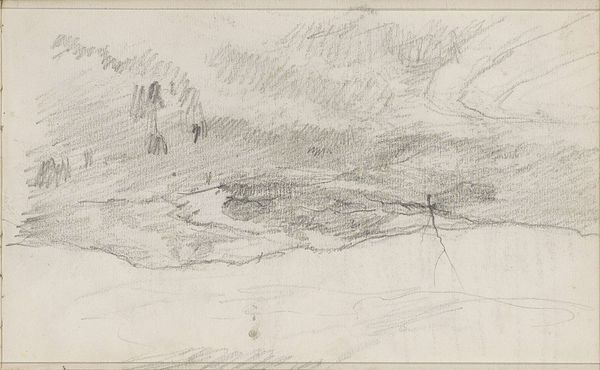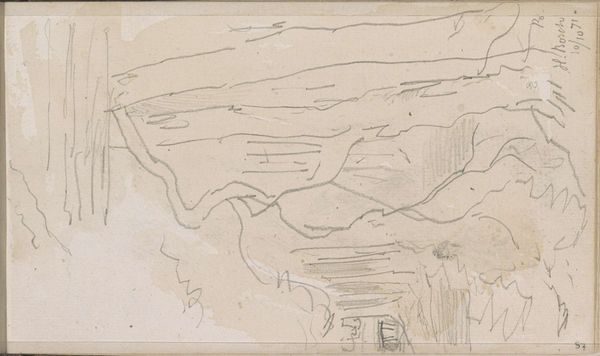
drawing, paper, pencil
#
drawing
#
dutch-golden-age
#
impressionism
#
pencil sketch
#
landscape
#
paper
#
pencil
Copyright: Rijks Museum: Open Domain
Editor: This is "Trees on a Waterfront" by Anton Mauve, created sometime between 1848 and 1888. It's a pencil drawing on paper, currently held in the Rijksmuseum. The starkness of the sketch, the density of the pencil strokes – it creates such a heavy, almost somber mood for me. What stands out to you when you look at it? Curator: I am drawn to the masterful use of line and form to create a sense of depth and space. Notice how the density of the pencil strokes varies, creating a textural contrast between the trees, the water, and the sky. The composition is carefully structured, with the verticality of the trees balanced by the horizontality of the water's edge. Consider how Mauve's technique anticipates later developments in abstraction through this distillation of form. Do you observe how the trees and shoreline interact? Editor: I see what you mean about the texture, especially where the pencil is really built up in the foreground. It’s like he’s abstracting the landscape just through pressure and direction of line. But do you think he was deliberately anticipating abstraction? It seems like a study, not a finished work. Curator: Precisely! And it is in that delicate interplay between intention and execution that we find meaning. Even within a preliminary study, the choices of composition, of mark-making, all point toward an engagement with the fundamental elements of visual language. Note the negative space, its interaction with the shaded masses. Editor: So, you're saying the *way* he sketched it, the attention to the purely visual relationships, is what matters most, regardless of his intention. Curator: Precisely. It is the structure, the composition, the materiality itself that yields significance. How those components interplay reveal the core structure regardless of intent. Editor: I hadn't thought of it that way before. It’s interesting to think about even a simple sketch containing this kind of structural depth. Curator: Indeed. Reflecting on such artistic decisions refines our appreciation, as we observe, dissect, and ultimately celebrate visual arts.
Comments
No comments
Be the first to comment and join the conversation on the ultimate creative platform.
